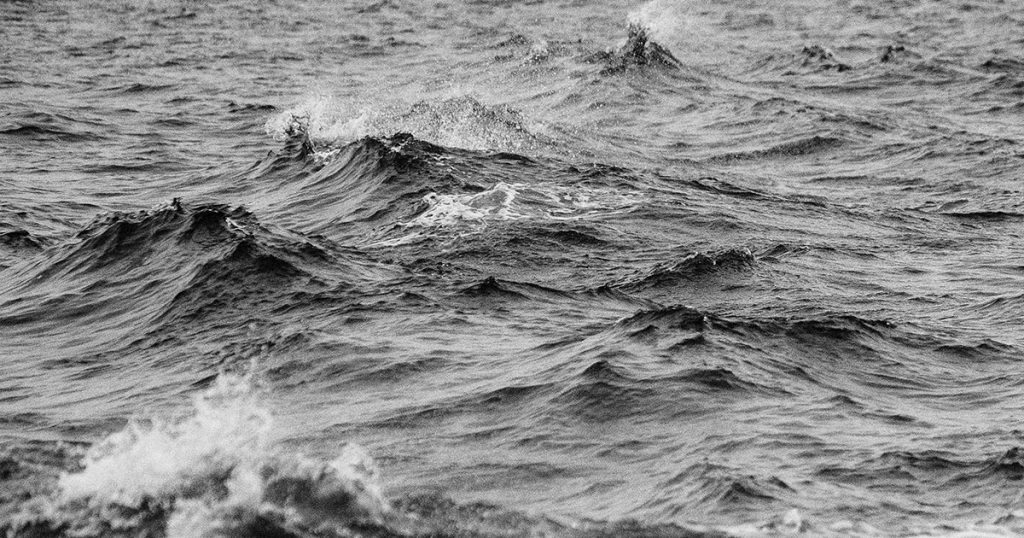What are microplastics? What types of microplastics exist and how are they formed? Microplastics in bottled and tap water, tea gas or in food: what are their effects on human health? Let’s take a closer look at the world of microplastics.
What Are Microplastics? What Types Exist and How Are They Formed?
Since the 1960s, global plastic production has increased by around 8.7% annually. Today, it is a $600 billion global industry whose life-cycle end is accountable for approximately 8 million metric tons of plastics entering the oceans annually.
Though plastic is a huge concern, there is a larger (though smaller) one: microscopic plastic particles with less than 5 millimeters (0.2 inches) called microplastics. This definition commonly includes plastic pieces in the nano-scale, < 1 μm in size. There are two types of them: primary microplastics and secondary microplastics.
Primary microplastics are directly designed for commercial purposes. These include:
- Nurdles: small pellets that put together, melted and molded to make larger plastic shapes;
- Microbeads: which are used in personal care products to help scrub off dead skin;
- Fibers: many clothes today are made of synthetic plastic fibers like nylon and polyethylene terephthalate (PET) that once washed get loose from clothes and pass through sewage treatment plants until they reach the ocean.
There are also secondary microplastics that are formed as large, original plastic pieces break down into millions of smaller pieces. According to a study published in the Journal of Macromolecular Science, the extent of plastic degradation depends on factors such as polymer type, age, and environmental conditions like temperature, weathering irradiation, and pH.
When plastics enter the ocean, the rate of degradation and persistence of plastics differs according to the polymer, shape, density, and the purpose of the plastic itself, a study published at PLOS One suggests.

Where Do Plastic and Microplastic Come From?
Plastic materials are either originated at land or at the ocean. Estimates suggest around 70-80% of ocean plastics have land-based sources, while 20-30% of plastics come from marine sources. On what concerns plastic materials coming from marine sources, half is estimated to be caused by fishing fleets that leave behind fishing nets, lines, ropes, and sometimes abandoned vessels.
Regarding land waste, according to a McKinsey study, discarded plastic materials enter the marine environment as trash, industrial discharge, or litter via inland waterways, wastewater outflows, and wind transport. While 25% of land-based discharges come from within the waste management system, the largest slice, 75% is uncollected waste.
Uncollected waste is indistinguishably linked and proportionally associated with economic development, local infrastructure, and legislation. Geography, local culture and context, and tides also play a big role, which helps explain why 52% of the plastic mass of the Great Pacific Garbage Patch is estimated to comprised of lines, ropes, and fishing nets.
Where Have Microplastics Been Found So Far?
Plastic is designed to last and as a result, it takes a very long time to break down – which is why nearly all the plastic ever created still exists in some form today. But where do all the tiny plastic particles end up at?
1 – Microplastics Found in Bottled Water
The Orb Media conducted a study at the Fredonia State University of New York labs whose report came out in 2018 and quickly got people’s attention worldwide.
Researchers sampled 259 water bottles purchased from 19 different locations in 9 countries around the world using Nile red dye to fluoresce particles in the water – the dye tends to hold to the surface of plastic but not most natural materials. They found out nearly all of the water bottles tested (93%) had microplastics inside.
Scientists ended up estimating that on average, a liter of bottled water has around 10.4 tiny plastic particles inside that people swallow when they’re drinking. Moreover, the researchers found, on average, around 315 tiny microparticles per 1-liter bottles.
2 – Microplastics Found in Tea Bags

Many consumers are increasingly becoming aware and worried about the impacts of plastic pollution and asking for the reduction of single-use plastics. Nonetheless, some manufacturers are creating new plastic packaging to replace traditional paper uses, such as plastic tea bags.
A 2019 peer-reviewed study, published in the journal Environmental Science & Technology showed that steeping a single plastic tea bag at brewing temperature (95 °C) releases approximately 11.6 billion microplastics and 3.1 billion nano plastics into a single cup of the beverage.
3 – Microplastics Were Found in Beer
In a study published in the Food Additives & Contaminants Jornal, a total of 24 German beer brands were analyzed in the search of microplastic fibers, fragments, and granular material.
Twelve of these were of the regular Pilsener type, five were wheat beers and seven were alcohol-free Pilsener. In all 24 beer samples, microplastic was found. Most fibers were transparent, but blue, black, or green ones were also present. Fragments and granular particles were whitish or transparent with the occasional occurrence of green and yellow ones.
Though the small numbers of microplastic items in beer in themselves may not be alarming, their occurrence in a beverage as common as beer indicates that the human environment is contaminated by micro-sized synthetic polymers to a far-reaching extent.
4 – Microplastics Found in Rain
Scientists with the U.S. Geological Survey (USGS) were recently (2019) analyzing Colorado rainwater samples. More specifically, atmospheric deposition samples were collected at 6 sites in the Denver-Boulder urban corridor and 2 adjacent sites in the Colorado Front Range.
In the report entitled “It Is Raining Plastic”, the study’s researchers wrote they found plastic in about 90% of the rainwater samples collected from all 6 sites. The plastic materials found were mostly fibers that were only visible with magnification and which were present in a variety of colors. Plastic particles like beads and shards were also seen with magnification.
In the discussion section, the researchers say better methods for sampling, identification, and quantification of plastic deposition along with an assessment of potential environmental effects are needed.
5 – Microplastics Found in Atmospheric Air
A study published in April 2019 in Nature Geoscience tells the results of a team of researchers who collected, for 5 months, during the winter of 2017-2018, samples of atmospheric microplastic deposition in a remote, pristine mountain catchment in the French Pyrenees.
After analyzing these samples, they found tiny pieces of plastic pollution “raining down from the sky” at a daily rate of 365 microplastic particles per square meter. In an area where there were no obvious sources for microplastics within nearly 100 kilometers, daily counts reached 249 fragments, 73 films, and 44 fibers per square meter that deposited on the catchment.
The team behind the study suggests microplastics can move and affect remote, sparsely inhabited areas through atmospheric transport. Moreover, air mass trajectory and settling considerations suggest the microplastics emission sources to at least be regional (>100 km) given the population density within the local area.
6 – Microplastics Found in Ashore Sea Breeze

Researchers from the University of Strathclyde and the Observatoire Midi-Pyrénées at the University of Toulouse, whose joint work was recently published in the journal PLOS One, used a “cloud catcher” set on top of a sand dune to collected sea breeze in France and analyzed it.
Different water samples from various wind directions and speeds, including a storm and sea fog, were collected. After examining them, researchers found microplastics in the sea spray that were between 5 micrometers and up to 140 micrometers long. The highest count was caused by the surf and 19 plastic particles per cubic meter of air were found.
This study is relevant as it allows drawing conclusions that some plastic particles could be leaving the sea and entering the atmosphere along with sea salt, bacteria, viruses and algae”.
7 – Microplastics Found in Human Feces
A study published in the Annals of Internal Medicine and led by a team from the Medical University of Vienna in Austria and the Environment Agency Austria investigated some dirty news: microplastic ingestion.
The researchers asked 8 participants to provide them with feces samples for a week, as well as records of the food they had eaten during that period – which included fish, wrapped food or water bottles for 10 types of plastic.
The human feces samples were tested for 10 types of plastic and 9 different plastics were found, with sizes ranging from 50 to 500 micrometers. On average, the human feces samples contained 20 microplastic particles per 10g of stool.
Dr. Philipp Schwabl, a co-author of the study, said larger investigations are needed to validate these findings. He also warned about the importance of researching the potential intestinal absorption of microplastics by humans as well as their effects on human health.
8 – Microplastics Found in Salts
Besides being used as a food conservation method, salts also provide essential nutrition elements to humans. The food we eat, the beverages we drink, and even cosmetic and pharmaceutical products have salts in their composition. Humans use commercial salts are used every day so they are a long-term exposure route for the general population.
In a literature review regarding the contamination of sea commercial salts (sea and terrestrial origins), Peixoto et. al (2019) claim microplastics were found in sea salts from 128 salt brands from 38 different regions, spanning over five continents.
According to the same review, 90% of the commercial salts samples analyzed contained microplastics, with concentrations reaching 19800 particles/kg−1. This means the typical salt consumer might be ingesting 36135 particles/year−1.
The fact that several saltworks are located in anthropogenically-impacted coastal areas, which generally leaves them exposed to several contaminants, helps explain these results. Dig into the literature review and you’ll find a brief review of various salt analyses in which the density of microplastics found diverge dramatically depending on several factors, among them the location.
9 – Microplastics Found in the Arctic Ice
Scientists who conducted a study recently (2019) published in Science Advances found plastic in ice floes from the Fram Strait, the passage that connects the Arctic Ocean to the rest of the world’s oceans. Their findings, published today in Science Advances.
Scientists speculate that atmospheric microplastic pollution may be variable in both time and space resulting in large differences of microplastics falling out via snow. They also suggest that local wind conditions may play a role too.
10 – Have Microplastics Been Found In Animals, Fish, and Sea Food? Yes.
Have marine animals been exposed to microplastics? Yes, because of their small size, microplastics can be ingested by a wide variety of marine organisms. According to a 2016 UN report, over 800 animal species have been contaminated with plastic via ingestion or entanglement (69% more than in 1977). Of these 800 species, 220 have been found to ingest microplastic debris in natura.
Plastic ingestion occurs within different trophic levels, including marine mammals, fish, invertebrates, and fish-eating birds and plastic particles are often found in organisms’ digestive tracts. With a preference to smaller particles, micro and nano plastics can persist in the animal’s body and move from the intestinal tract to the circulatory system or surrounding tissues.
A study named Microplastics in Seafood and the Implications for Human Health from Smith et. al (2018) describes evidence regarding human exposure to microplastics via seafood. In its literature review, it describes microplastic ingestion has been documented in planktonic organisms and larvae at the bottom of the food chain, as well as in small and large invertebrates and in fish.
Plastic particles are often found concentrated in an organisms’ digestive tracts such that bivalves and small fish consumed whole are more likely to expose microplastics to the human diet. But are microplastics harmful and dangerous for human health?
Are Microplastics Harmful and Dangerous for Human Health?
As we’ve just seen, as a result of the widespread plastic contamination, microplastics are being ingested by many species of wildlife. Since these microplastics are associated with chemicals (from manufacturing and others sorbed from the surrounding environment), studying microplastics found in seafood and fish is crucial to understand their potential impacts on human health.
So, are microplastics dangerous for human health? Human health effects depend on exposure concentrations and due to data gaps in microplastic research, there is not enough information to evaluate the true amount of microplastics humans may be exposed to via food, as well as what exactly is their impact.
Some organizations have made comments about microplastics and human health. It’s the case of the World Health Organization (WHO), which claims, to respect to drinking water, that “microplastics are increasingly found in drinking water, but there is no evidence so far that this poses a risk to humans.” It is also known that the human body’s excretory system eliminates microplastics, likely disposing of > 90% of ingested micro- and nano plastic via feces.
However, other studies suggest microplastics with particular characteristics can move across living cells, “such as M cells or dendritic cells, to the lymphatic and/or circulatory system, accumulate in secondary organs, and impact the immune system and cell health.” Also, according to Wright and Kelly (2017), ingested microplastics may cause inflammation in tissue, cellular proliferation, and necrosis and may compromise immune cells.
The physical effects of accumulated microplastics are less understood than the distribution and storage of toxicants in the human body. However, preliminary research such as the one from Wright and Kelly (2017), has shown several potentially concerning impacts of microplastics in human health. These include enhanced inflammatory response, size-related toxicity of plastic particles, chemical transfer of adsorbed chemical pollutants, and disruption of the gut microbiome.
One thing looks clear, further research to understand and reduce human health risks is very important. At the same time, circular economy practices that reduce the amount of plastic produced or even replace it, as well as betting on waste treatment processes and plants is fundamental to reduce the harm caused by plastic across all human ecosystems.
[Image credits to Shutterstock on microplastics]

